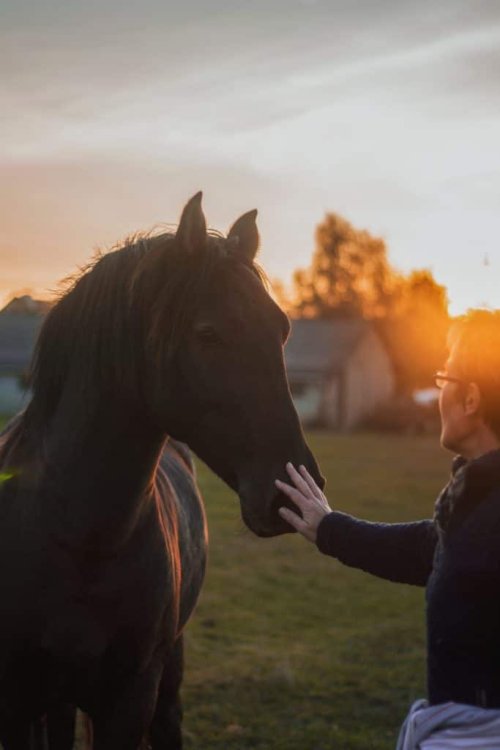in basket
TOP OFFER - SUMMER20 - 20% OFF and 4 FREE seasonal products!
Understanding Your Horse’s Behaviour: Part 2

Evolution and domestication of the horse
Firstly, the evolution of the horse is reported to have begun some 65 million years ago, whilst domestication of the horse appears to have started around 6,000 years ago. Certainly, for over 3,000 years the horse defined victory or defeat in war. From the mid-19th century to the mid-20th century, we very much realised the importance of the horse in agriculture before machinery. However, it is also reported that horse racing began in the late 1600’s, with the UK jockey club established around 1750. However, despite these changes in use, it’s important to consider what the natural environment of the undomesticated horse involved and how, if any, this has changed with domestication.
The domesticated horse
As we have domesticated the horse, there has been a significant departure from their natural environment in the way that we manage them. We have supressed the flight or fight reaction, to an extent, by training them to be ridden. Also, in many cases, we have moved away from horses being together at pasture for 24 hours a day by stabling them individually for often prolonged periods each day. When they are turned out with other horses, the herd dynamics can be unstable due to horses leaving and new horses arriving on yards. The physical demands that we place on some horses, for example those we use in sports such as racing, endurance, eventing, show jumping and dressage, have necessitated the introduction of higher energy feedstuffs, such as cereal grains that are high in starch (and energy) and low in fibre. These types of management and feeding regimes are a departure from a horse’s natural state where they are continually grazing and moving, won’t voluntarily confine themselves, have a relatively stable hierarchy and eat a high fibre, low nutritional quality diet. There are a number of factors that influence your horse’s behaviour such as his instincts, genetics, environment and health. In terms of the environment, day to day management, such as turnout, exercise and diet can all impact on your horse’s behaviour.
Diet & behaviour
As discussed in my previous article, understanding normal horse behaviour helps avoid the development of behaviour problems that may result from inadequate management routines and a lack of understanding of how the horse ‘perceives’ their world. In terms of the management factors that can impact on behaviour, there is increasing research into the impact that a horse’s diet can have on their behaviour. The old saying “he’s feeling his oats” certainly suggests that over the decades people have found horses fed oats, which are high in starch, to be more “on their toes” and more likely to react (or spook) compared to when they are not fed oats. It was often suggested that this may be due to the increase in the amount of energy provided in the diet. However, many of us will have owned or known of a horse that is a bit “lazy” and lacking in forwardness and will no doubt have tried to add additional energy to the diet to address this. What you have likely found is that your horse is no more forward going but is much more likely to spook. This is an area that has baffled nutritional researchers for many years.
However, recent work at the University of Glasgow has shown that horses fed diets containing starch, such as concentrate feeds containing cereals grains (oats, barley, maize), are likely to be more reactive than those horses fed a fibre-only diet. When horses are fed the same amount of energy but in different forms, starch versus fibre, their heart rates and reactiveness are greater when fed starch compared to fibre-only. Horses fed starch were less predictable in their behaviour compared to those fed a complete fibre diet and were therefore more difficult to handle. The horses on the fibre-only diet were also more settled and less reactive compared to those fed starch. The group of horses fed the starch feed were also observed to be more tense, nervous and unsure about their surroundings. It is important to note that the amount of starch that was fed was less than many leisure horses receive in their ration, which shows that even small amounts of starch in the diet can have a significant effect on your horse’s behaviour.
It is not clear why horses are more reactive when fed high-starch diets, but it is suggested that this may be due to changes in their hindgut microbes. It is now well documented in recent years that gut microbiota can have a significant effect on behaviour, via what’s now termed the ‘gut-brain axis’. It is now widely accepted that gut microbes play a pivotal role in this gut-brain communication system. It is also known that diet has a significant impact on gut microbes; for example, a sudden change in diet from a forage-only diet to a diet supplemented with a high-starch concentrate feed leads to significant changes in the hindgut microbial population. In fact, changing forage type (e.g. hay to haylage) can also significantly alter the microbes in the hindgut of the horse.
The horse’s digestive system is also not designed to cope with high levels of starch, which is not surprising since wild horses would not consume a great deal of starch in their diet. Therefore, if a horse is given a bucket feed that contains a lot of starch; for example, a compound mix containing cereal grains, then only a certain amount will be digested in the small intestine. This is because horses produce less starch-degrading enzymes in their small intestine compared to other species, including humans. Instead the starch passes to the hindgut, where it can cause disruption to that environment. The hindgut in the horse is designed to breakdown fibre. Billions of micro-organisms, mainly bacteria, break down the fibre to produce volatile fatty acids that are absorbed across the gut wall and used as an energy source by the horse. The pH of the horse’s hindgut is around 6.7, which is ideal for the fibre-degrading bacteria. When starch enters the hindgut, other types of bacteria, mostly lactic acid-producing bacteria, begin to break down the starch. Since these bacteria produce lactic acid, instead of volatile fatty acids, the lactic acid drops the pH in the large intestine. The fibre-degrading bacteria do not cope with a drop in pH and they begin to die off. The result is a hindgut that is unhealthy in terms of pH and also its ability to digest fibre. In severe cases this can lead to colic and other diet-related disorders, such a laminitis. This change in the hindgut environment may also lead to a change in your horse’s behaviour.
What is still unclear, and still being investigated, is the link between changes in the microbial populations in the gut and the change in horse behaviour. It is well known that a two-way communication system exists between the gut and the brain, which is referred to as the gut-brain axis. There is also increasing evidence that gut microbiota can impact on behaviour, known as the microbiome-gut-brain axis. The exact mechanism for this is not yet fully understood, but there is evidence that changes in gut microbiota can result in an increased stress response.
Diet and abnormal behaviour
Abnormal behaviour is behaviour that differs in frequency, duration or form from normal behaviour; for example, stereotypic behaviours. Stereotypic behaviours are defined as ‘a repetitive behaviour with no apparent function’. These include weaving, box-walking, crib-biting and wind-sucking. There is a growing amount of research that has implicated diet and management in the development of these behaviours. For example, crib-biting appears to be related to a lack of forage provision. As horse’s have evolved to chew, they are motivated to do so, and a lack of forage may lead to the development of this behaviour. No wild horses have been seen crib-biting. Weaving is also thought to be linked to the urge to walk, forage and socialise and therefore isolation and lack of turnout are thought to be important factors in the development of this behaviour. Box walking is also thought to be linked to a lack of turnout, social contact and long periods in the stable.
Managing behaviour
Training the ‘well adjusted’ horse, one that is able to cope with the demands placed upon it, relies on the animal being well socialised; having positive early experiences; being weaned appropriately; and thoroughly desensitised and habituated to potentially threatening situations. In terms of dietary management, evidence suggests that mimicking the horse’s natural eating patterns as far as is practically possible by lowering starch intake, increasing fibre intake, and feeding little and often, is extremely beneficial in alleviating/reducing many unwanted behaviours. Therefore, efforts should be directed towards balancing the provision of a diet that meets the nutrient requirements of the horse with satisfying the behavioural needs of an animal designed to eat a low-quality, high-fibre diet on an almost continual basis.
Summary
- Ensure adequate fibre provision
- Mimicking the horse's natural eating patterns as far as is practically possible.
- Feed fibre first and then supplement with other feeds where required.
- Keep starch intakes low and feeding little and often.
- Ensure turnout where possible, ideally with other horses.
Article written for Premier Performance by Professor Jo-Anne Murray.






